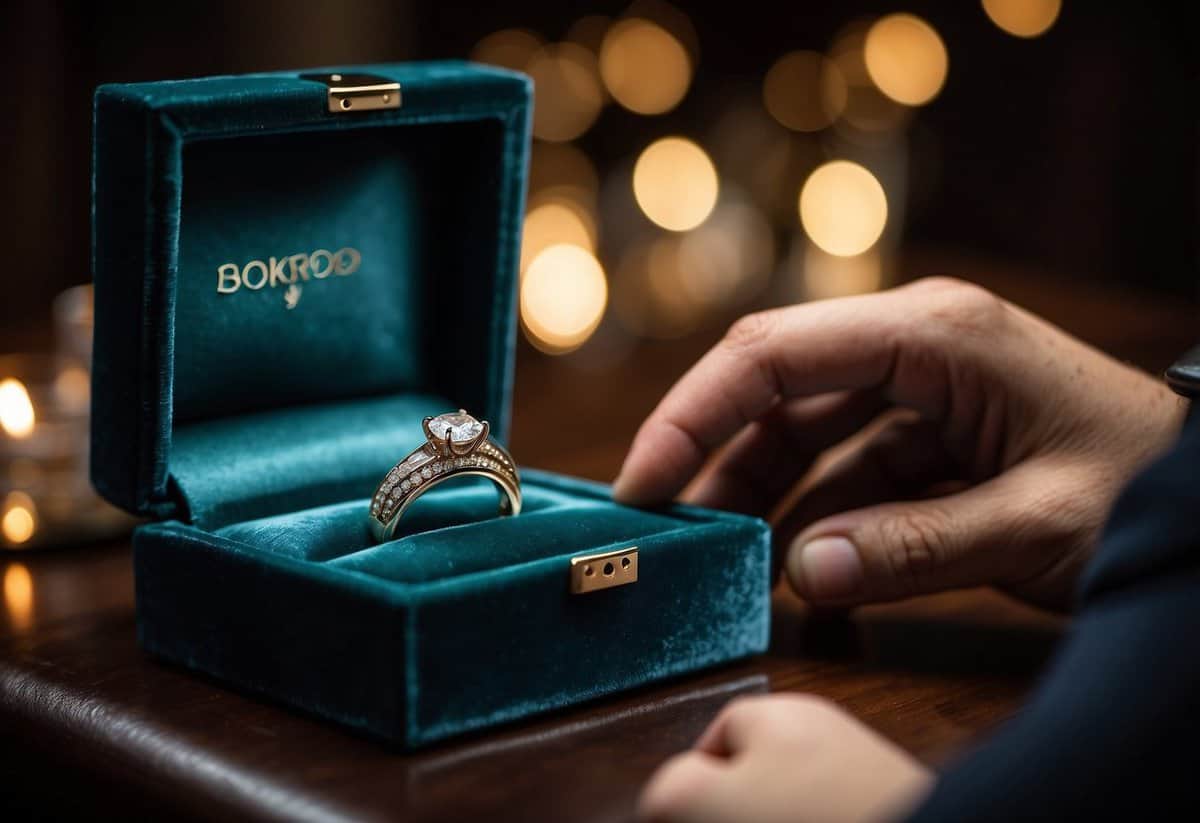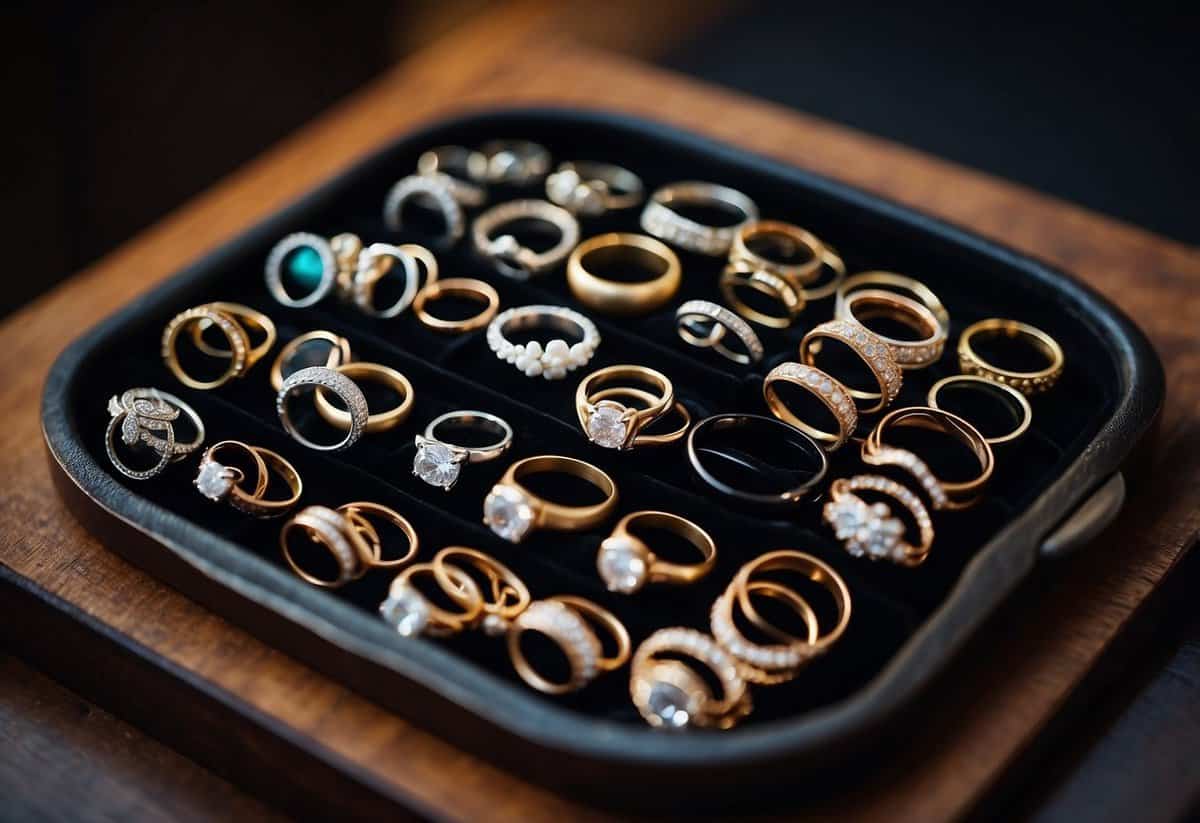Who Pays for the Wedding Rings? A Guide for Happy Couples
Planning a wedding and figuring out all the small details can be a mix of excitement and stress. One common question that comes up is about who exactly pays for the wedding rings. Traditionally, the bride (or her family) buys the groom’s wedding ring, while the groom (or his family) pays for the bride’s. This practice comes from a long history where giving rings symbolized love and commitment in marriage.

These days, traditions can vary and it’s more common for couples to choose what works best for them. Whether you’re buying each other’s rings or splitting the cost, what matters is the love and agreement between you and your partner. For more traditional setups, you might find that the family of the bride is often responsible for invitations and transportation, while the groom’s family covers the rehearsal dinner and even the honeymoon.
No matter how you decide to handle the costs, it’s important to communicate openly and plan together. After all, the process of planning your wedding, including deciding on the rings, should strengthen the bond you share as you take this big step toward marriage.
Understanding Wedding Ring Traditions

Wedding rings hold deep significance and are steeped in many traditions. Knowing the customs and symbolism can help you make more informed choices about your own wedding rings.
Role of Tradition in Ring Selection
Traditionally, different cultures have specific practices when it comes to selecting and buying wedding rings. For example, in many Western traditions, the groom buys the engagement ring and wedding band for the bride. Meanwhile, the bride purchases the groom’s wedding band.
In recent times, this practice has become more flexible, with many couples opting to share the costs or choose rings together. The variety of metals and styles available, from gold and silver to platinum and titanium, means there are options to suit every taste. Adhering to or deviating from traditional wedding etiquette depends largely on your personal preferences.
Symbolism of Wedding Bands
Wedding bands are more than just pieces of jewelry; they symbolize eternal love and commitment. The circular shape of the ring represents eternity, with no beginning or end. This tradition dates back to ancient Egypt, where people believed that the ring finger contained a “vein of love” that was connected directly to the heart.
In many traditional weddings, the exchange of rings is a key part of the ceremony, signifying a lifelong bond. The material of the band, whether it’s gold, silver, or another metal, can also carry symbolic meaning, often chosen for its durability and beauty. Knowing the history and symbolism of wedding rings can make the ring exchange even more meaningful to you and your partner.
Who Pays for the Wedding Rings?

Traditionally, certain roles and financial responsibilities for wedding rings were well-defined. Today, these roles have evolved, and modern considerations often influence who pays for the rings.
Historical Perspective on Financial Responsibility
In the past, the financial responsibility for the wedding rings was largely influenced by tradition. Typically, the bride’s family would pay for the groom’s ring, and the groom or his family would cover the cost of the bride’s rings. This arrangement was part of the broader financial burden managed by each family.
Families often took pride in making these contributions. It was a way to show support and involvement in the wedding planning. This tradition emphasized the mutual investment in the couple’s future.
The financial etiquette around who pays for wedding rings was clear-cut. Yet, like many wedding customs, this has changed over time, adapting to new social and economic circumstances.
Modern Considerations and Communication
Today, who pays for wedding rings can depend on various factors, and it’s no longer just about following old traditions. Many couples now consider their joint finances and shared goals. Some might choose to split the cost of the rings or pay from a shared budget.
Modern couples often communicate openly about financial responsibilities. This means discussing who pays for wedding rings as part of the larger conversation about wedding expenses. The focus is on what feels fair and manageable for both partners, rather than sticking strictly to traditional roles.
Family contributions can still play a role, but the decision is often more flexible. Communication and mutual agreement are key to finding a solution that works for everyone, making the process more personal and less rigid.
Budgeting for Wedding Rings

Budgeting for wedding rings involves assessing your financial situation and choosing rings that match your budget. It’s important to consider all related expenses to make informed decisions.
Assessing Your Financial Situation
Start by looking at your overall wedding budget. Determine how much money you have set aside overall, and consider the average cost for wedding rings: around $550 for men and $1,100 for women. Analyze your current financial situation, including savings and monthly income. This can help you set a realistic budget for the rings, avoiding financial stress.
Think about all your financial obligations. Are there upcoming expenses, such as moving into a new home or planning a honeymoon? Creating a detailed financial plan ensures you allocate money wisely and can afford the rings without compromising other important needs.
Choosing Rings That Reflect Your Budget
When selecting wedding rings, consider both your budget and personal preferences. Decide on the material and style that fit your financial constraints. For example, gold and platinum rings are popular but may have a higher cost. On the other hand, titanium and silver rings are more affordable.
Visit different jewelers to compare prices and quality. Look for rings that are within your price range but also check for sales or discounts. Remember that a good ring doesn’t need to be the most expensive one; it should reflect your commitment and taste. Keep in mind additional costs like engraving or resizing. These factors help you stay within budget without sacrificing quality.
Selecting the Right Rings

Picking out wedding rings involves considering personal preferences and key factors like the type of metals and stones, as well as ensuring the size and quality are just right.
Types of Metals and Stones
When choosing wedding rings, the type of metal and stones is crucial. Platinum and yellow gold are popular metals due to their durability and elegance. Platinum is known for its strength and hypoallergenic properties, while yellow gold has a classic and timeless appeal.
For the stones, diamonds remain the favorite for their sparkle and durability. If you prefer something unique, consider gemstones like sapphires, emeralds, or rubies. An eternity band with stones all around can be both a simple and elegant choice. The finish of the ring, whether it’s polished, matte, or hammered, also adds to its overall charm.
Importance of Size and Quality
The size and quality of your wedding ring are vital for comfort and longevity. Getting the right size ensures the ring fits well without being too tight or too loose. Most jewelers offer sizing guides or in-store fittings to help you find the perfect fit.
Quality is just as important. Look for rings that meet high standards in craftsmanship. Check for certifications, especially if you’re buying diamond rings, to guarantee their authenticity and value. Whether you like a simple design or a more elaborate one, a well-crafted ring will hold its beauty and significance for years to come.
Alternative Wedding Ring Options

Exploring alternative wedding ring options can reflect your unique personalities and values. You might find these choices more meaningful or budget-friendly than traditional rings.
Non-Traditional and Second-Hand Rings
Consider non-traditional wedding ring options like tattooed rings or gemstone rings. Tattoos can symbolize your commitment without a physical band. Gemstones, available in various colors, can be more affordable than diamonds and let you express your personal style.
Second-hand rings are another great option. These rings can carry history and charm that brand new rings might lack. Buying a second-hand ring can be an eco-friendly choice by reusing and repurposing materials, which supports sustainability. You might find unique vintage pieces that stand out from modern designs.
You can also look at family heirlooms. These rings can hold special meaning while reducing the need to purchase new jewelry. Using an heirloom connects you to your family’s past and can be a sentimental tribute.
Cultural and Personal Significance
Wedding rings can reflect your cultural background and shared values. Some cultures use rings of different materials like wood or bamboo. These materials can symbolize growth and strength in your marriage.
For a more personal touch, think about custom-made rings that incorporate symbols or designs meaningful to you both. This way, your rings can tell a story unique to your relationship.
Partnership and unity can be expressed through matching tattoos or coordinated jewelry like bracelets or necklaces. These alternatives can be a compromise between traditional rings and something that suits both of your preferences and individual incomes.
Such choices celebrate equality and the partnership you are building together, making your wedding rings a true representation of your love and unity.


